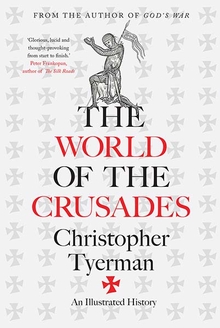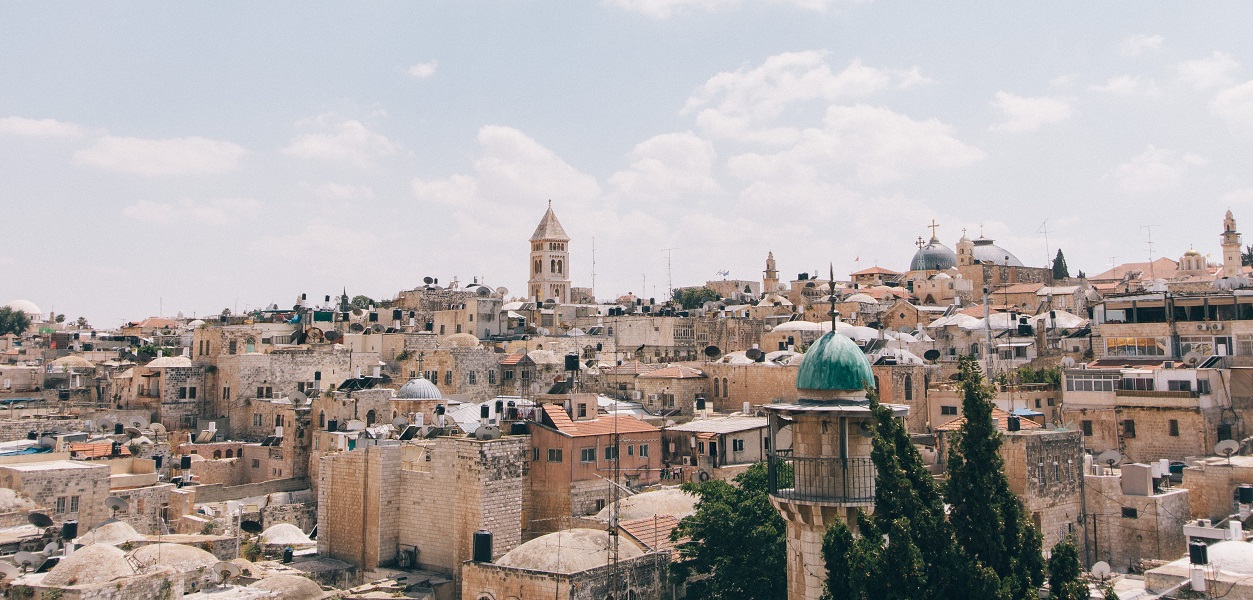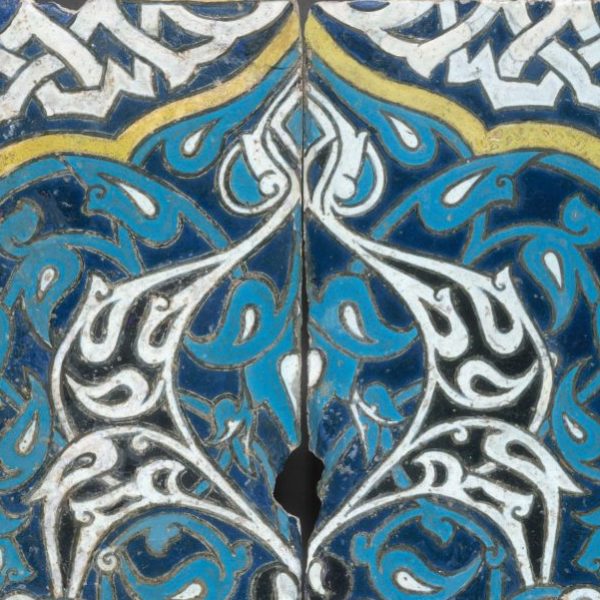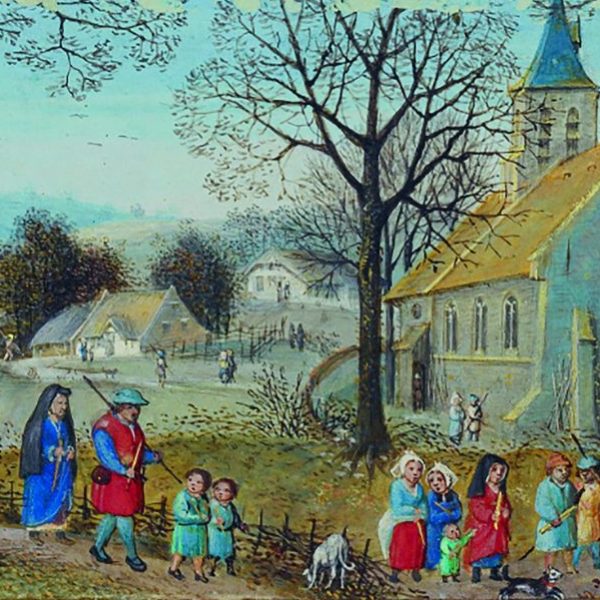What happened after the Crusades?
Christopher Tyerman—
We all know about the Crusades, don’t we? They were wars fought by western European Christians against Muslim control of Jerusalem and the Holy Land of Palestine. They began in 1095, when Pope Urban II summoned the knights of Christendom to undertake a war that would earn its warriors heavenly reward for fighting and killing. They lasted until 1291 when Acre, the last crusader stronghold on the mainland of the Levant, fell to the armies of the Sultan of Egypt. In the intervening centuries western European settlers, proto- colonists, driven by a toxic blend of religious intolerance, credulous enthusiasm and material greed, violated the sophisticated civilisation of Islam, carving out transient principalities, building formidable castles that still dominate the landscape and profiting greatly from commodities and commerce. Over two centuries, the contest threw up lasting figures of history and legend such as Richard the Lionheart and Saladin, and epitomising both the differences and parallels between past and present: political action overtly derived from religious emotion; western intervention in the Near East and conflict with Islam. The Crusades have simultaneously been fitted into narratives of antagonism towards and interaction with Europe’s neighbours and, as the hostile eighteenth century Scottish philosopher and historian, David Hume, no friend to religion, observed, they ‘have ever since engaged the curiosity of mankind’.
Today, the Crusades find extensive employment, from indiscriminate synonyms for passionately pursued good causes; flails in Near Eastern Islamist propaganda to castigate supposed western neo-imperialists; or evidence in etiolated intellectual debates on a supposed eternal clash of civilisations; to laboured Hollywood movies and aesthetic icons to English soccer fans cheerfully dressing up as crusader warriors. The Crusades feature in contemporary western culture as perhaps the most prominent surviving image of medievalism, in western societies given fresh recognition by the vogue for pseudo-medieval fantasy ( from Tolkien to Game of Thrones ) as well as by recent geo-political adventurism in the Near East. In western Asia, ever since Napoleon Bonaparte’s grandiose quixotic invasion of Egypt in 1798, the Crusades have provided a symbol and precedent for indigenous resistance to foreign intrusion and local misrule. The Crusades’ fascination for apologists or critics alike has tended to revolve around their quality as ideological wars, from the perspective of the twentieth and twenty-first centuries now more recognisable as comprehensible even if not necessarily legitimate, proving perennial pause for thought.
Much of this, however, is misconceived as the standard account outlined above is far from being the whole or even the accurate story. For one thing it assumes a perspective of the crusaders, not their victims on whom they preyed. For another it ignores the scope of the historical Crusades. The ideological, emotional, devotional, legal and institutional trappings of Urban II’s holy war to Jerusalem soon transferred to other frontiers and theatres of inter-faith challenge, in Moorish Spain or the pagan Baltic and, after a century or so, to struggles within Christendom with religious dissidents in southern France and wars against Greek Orthodox Christians and even Catholic political rivals. Crusading presented as an imitation of Christ carrying the cross became promoted as a metaphor for the Christian life that, through the purchase of crusade spiritual rewards, potentially could directly embrace the whole of society, not just those who fought. The Crusades were not homogeneous. They affected many communities and regions very differently, from the foundation of Prussia, the Orthodox and Roman Catholic Christian schism, attacks on European Jewry or the Spanish nationalist myth of the Reconquista, not just the peripheral occupation of parts of Syria and Palestine. Even there the Crusades were never simply a matter of ‘Christians versus Muslims’. The reality was always more confused, cooperative as well as coercive. Fitting wider patterns of cultural and territorial aggression, crusades were wars like any other, matters of resources, finance, recruitment and technology, of commerce and carpentry as much as castles and knights. God never excluded Mammon.
The reach of the Crusades straddled continents. Victims included Turks, Arabs, Greeks, Balts, Livs, Spaniards, Moroccans, Syrians, Palestinians, Egyptians, Tunisians, Russians, Finns, Bosnians, west German peasants, English rebels, Bohemian nationalists, political enemies of popes in Germany, Italy and Spain, French and Savoyard dissidents, and Jews. But in almost every case, these enmities were neither existential nor permanent, involving issues of contact and competition to which crusade ideology was tangential. Equally some of the lasting influences of the Crusades were domestic – the Dannebrog flag of Denmark, or income tax, the first examples of which were levied for crusading in the twelfth century. The Crusades were more complicated than popular images allow, not a matter of heroic or villainous Us v Them. They were of their time and place not ours. To claim otherwise is at best ignorantly meretricious; at worst mischievously mendacious.
The crusades did not create western imperialism, Islamist victimhood or the State of Israel. Wars fought by populist adherence to an ideological or religious ideology may excite modern recognition of a cause- the crusaders’ chant of God Wills It!- at once unprovable and unanswerable, but their legacies are imaginative and sentimental. The nineteenth century coincidence of romantic medievalism, Christian mission and the global spread of European empires revived and invented memories of crusading, providing spurious arguments for French and British involvement in North Africa and western Asia. Western proclamation of crusading precedents informed the counter-ideologies of indigenous regional resistance to foreign intervention. Citing historical precedent is often a sign of historical ignorance. Ironically, the bogus ‘West is Best’ neo-imperialist clash of civilisation construct encourages its Manichean jihadist twin. The Crusades’ continued legacy derives from pilfering a crude vision of the past to justify contemporary conflict or victimhood. The modern Near East is not a product of medieval wars, yet the shadow of the Crusades lies across the rhetoric of polemicists. In so far as this influences popular beliefs, the legacy is real; in so far as it claims to represent historical continuity, it is not.
Christopher Tyerman is professor of the history of the crusades at Oxford University and a fellow of Hertford College. His books include God’s War, The Debate on the Crusades, and How to Plan a Crusade. He lives in Oxford.
Further Reading:

Featured photo by Erol Ahmed on Unsplash


























